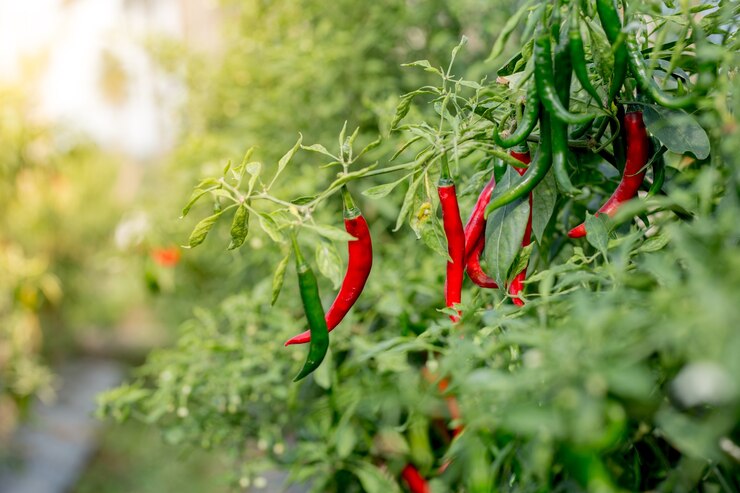Growing paprika can be a rewarding venture in South Africa, but it requires careful planning and consideration of various factors to ensure a successful and thriving cultivation. Here are 20 crucial considerations before embarking on paprika cultivation in South Africa:
1. **Climate Suitability:**
– Evaluate whether the climate in your specific region of South Africa is conducive to paprika cultivation. Paprika generally thrives in warm and sunny conditions.
2. **Soil Quality:**
– Conduct soil tests to determine the soil’s pH, fertility, and drainage. Paprika plants prefer well-draining soil with a pH between 6.0 and 7.5.
3. **Land Preparation:**
– Prepare the land by clearing debris, weeds, and rocks. Ensure proper tillage for optimal seedbed preparation.
4. **Varietal Selection:**
– Choose paprika varieties that are well-suited to the local climate and meet the market demand. Consider factors such as disease resistance and yield potential.
5. **Water Availability:**
– Assess the water availability for irrigation. Paprika plants require consistent moisture, especially during the flowering and fruiting stages.
6. **Irrigation System:**
– Implement an efficient irrigation system, such as drip irrigation, to provide consistent and controlled water to the paprika plants.
7. **Crop Rotation:**
– Plan for crop rotation to prevent soil-borne diseases and improve overall soil health. Avoid planting paprika in the same location consecutively.
8. **Pest and Disease Management:**
– Develop a pest and disease management plan. Common pests include aphids and spider mites, while diseases like powdery mildew can affect paprika plants.
9. **Fertilization Plan:**
– Create a fertilization plan based on soil nutrient levels and the specific needs of paprika. Ensure proper balance of nitrogen, phosphorus, and potassium.
10. **Sun Exposure:**
– Ensure that paprika plants receive adequate sunlight. Aim for a location with full sun exposure for optimal growth and fruit development.
11. **Harvesting Time:**
– Determine the ideal harvesting time based on the maturity of the paprika fruits. Harvest when the peppers reach the desired color and size.
12. **Harvesting Techniques:**
– Implement proper harvesting techniques to avoid damaging the plants. Use sharp, clean tools, and handle the fruits carefully.
13. **Post-Harvest Handling:**
– Develop a post-harvest handling plan to maintain the quality of harvested paprika. Proper drying and storage are crucial to prevent mold and maintain flavor.
14. **Market Research:**
– Conduct thorough market research to understand the demand for paprika in South Africa. Identify potential buyers and market trends.
15. **Quality Standards:**
– Familiarize yourself with quality standards and certifications required for paprika. Adhering to these standards can enhance the marketability of your produce.
16. **Processing Options:**
– Explore potential processing options for paprika, such as making spice blends or dried paprika flakes. Diversifying your product offerings can increase market opportunities.
17. **Labor Requirements:**
– Estimate the labor requirements for paprika cultivation and harvesting. Plan for an adequate workforce during peak seasons.
18. **Financial Planning:**
– Develop a comprehensive financial plan that includes the costs of inputs, labor, and potential returns. Consider budgeting for unforeseen challenges.
19. **Government Regulations:**
– Familiarize yourself with agricultural regulations and any government incentives or support programs for paprika cultivation in South Africa.
20. **Environmental Impact:**
– Consider the environmental impact of paprika cultivation. Implement sustainable practices to minimize the use of chemicals and promote biodiversity.
By carefully considering these factors, you can establish a solid foundation for successful paprika cultivation in South Africa. Always stay informed, adapt to local conditions, and continuously assess and improve your farming practices for a thriving paprika venture.
Join 'Farmers Mag' WhatsApp Channel
Get the latest Farming news and tips delivered straight to your WhatsApp
CLICK HERE TO JOIN






